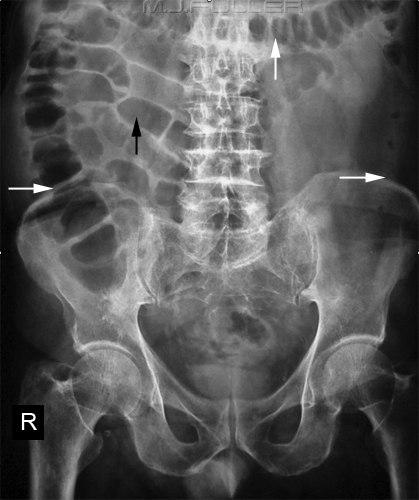OVERVIEW
This page is dedicated to covering how the large intestine will appear across different radiological studies.
ABDOMINAL X-RAY
An abdominal X-ray is a very routinely ordered study, and a core component of reading this study is to evaluate the appearance of the large intestine.

Characteristics of the large bowel on a KUB: the below features can help identify the large bowel on a KUB.
- Circumferential location: given the anatomical location of the large intestine it often will be found on the borders of the abdomen.
- Gas pattern: there will be varying amounts of gas in the large bowel, but there will almost always be air in the rectum and sigmoid colon.
- Air/fluid levels: very little to none present in normal large bowels.
- Diameter: when dilated the large bowel can become very large.
- Haustra: these intestinal markings will be visible, however they will not go across the entire length of the bowel lumen.
- Stool: the nature of the large intestine justifies the fact that stool may be present in this structure.
Page Updated: 10.07.2016